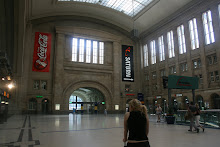GERMAN TAX OVERVIEW
The German tax law is very complex and numerous exemptions (and deductions) apply, therefore
it is necessary to consult a German tax advisor/accountant in all individual cases. The following
information is merely a brief introduction for individual non-resident investors holding property in
Germany (as private asset) and must not be viewed as an exhaustive tax guide or tax advice.
Business income and other types of income (German tax law distinguishes seven different forms
of income for tax purposes) are out of scope of this brief guide. The following information applies
to property held as a private asset only; property held as a business asset is taxed differently.
INCOME TAX (INDIVIDUAL)
Income tax is levied on all German income. As a general guide, the tax is progressive and levied
at rates of 15-42%. In addition, a solidarity surcharge (to pay for the former East Germany
integration) of 5.5% of the total tax due is payable. (The top rate of 42% is only levied on profits
exceeding 52,152 euro.)
There are two types of income tax – tax on wages (Lohnsteuer) and tax on income
(Einkommensteuer). The difference is the method of collection; tax on wages is withdrawn at
source and paid to the tax office by the employer, while income tax (on income from
self-employment, rental income, investments, etc) is paid directly by the individual taxpayer.
Based on the previous year’s tax assessment tax payers have to make tax pre-payments in
quarterly installments (March, June, September, December). The tax return for the year needs
to be filed by 31st May of the year to follow. Adjustments are made for eventual under- or
overpayment.
Germany has been undergoing positive changes in its tax law in the last few years. The individual
income tax rates have been decreased, from 53% (1998) to 42% (2005) in case of highest rate,
and down to 15% from 25.9% as far as lowest rate. (The Merkel government has now agreed on
a corporate tax reform to lower the total tax liability of corporations to 29.83% from current
38.65%, possibly effective 1 January 2008. To compensate, some of the many tax avoidance
loopholes are to be closed.)
The non-taxable minimum is currently 7,664 euro for single persons (or 15,328 euro for married
couples), however, there are some exceptions where this may not apply
OTHER TAXES
There is a number of other taxes, including VAT (Umsatzsteuer or Mehrwertsteuer), additional
sales taxes on certain goods such as alcohol, tobacco, gasoline, etc, other business taxes,
church tax, etc. (Church tax of 8% of the income tax is only payable by those officially affiliated
with one of the main churches.
VAT is being increased from 16% to 19% (effective 1 January 2007), although a lower rate of
VAT applies to certain products, while others (such as medical goods) are exempt.
HOLDING REAL ESTATE
Real estate tax
German property is subject to a real estate tax (Grundsteuer), levied annually. The tax base is the
‘assessed value’ (Einheitswert). The tax depends on several factors including location, size, use,
local municipal coefficient, etc. Typically, for a 1 bedroom apartment in Berlin the tax will be in the
region of 200-500 euro p.a. (Real estate tax is generally paid by the tenant.)
Rental income
Rental income is taxed as income (see section on Income Tax) and is subject to the progressive
tax rate. Interest on loans provided to finance real estate, expenses and property related cost (eg.
management fees, insurance, etc) can be deducted from the taxable rental income.
Depreciation
Real estate is subject to tax depreciation on an annual basis. (Land cannot be depreciated.)
Buildings are depreciated over 40-50 years, depending on the year of construction. (2% annual
depreciation applies to buildings constructed in/after 1925, 2.5% for buildings constructed prior to
1925.) This effectively lowers the annual tax payable in Germany.
Special rates apply to modernisation of listed (Denkmalschutz) buildings – modernisation costs
can be depreciated over 12 years (9% p.a. for the first eight years and 7% p.a. in the next four
years). Modernisation of not listed properties follows the standard depreciation rates.
See following page for BUYING AND SELLING REAL ESTATE
Subscribe to:
Post Comments (Atom)




No comments:
Post a Comment